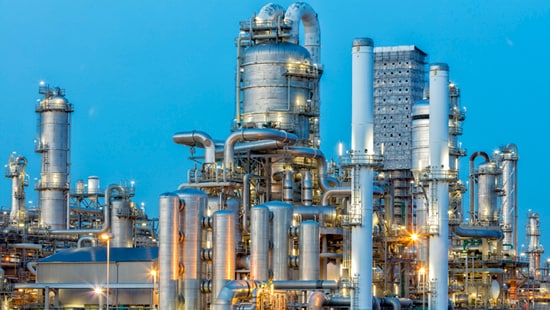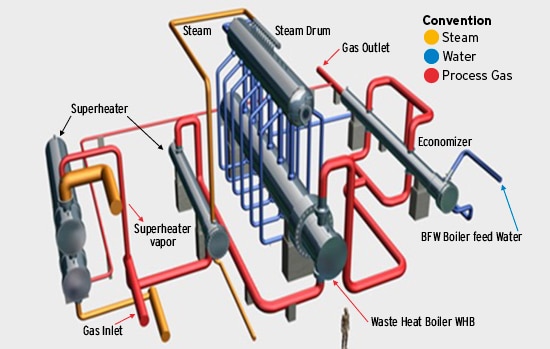Failures Diagnosis and Prediction in Heat Recovery Boilers in the Chemical Industry

Many industrial processes generate heat, which is recovered and used to generate steam. Traditionally, steam recovery boilers supply a significant part of a plant's steam demand.
Depending on the characteristics of the heat source, there are several types of heat recovery units working at different pressures, low, medium and high pressure, to produce both saturated and superheated steam, heat that is generally used to drive power generation turbines.
Knowledge of the type of recovery unit, its characteristics, the source of hot gases and the destination of the steam produced, dictates the operation, chemical treatment and maintenance programs to maintain its integrity, as well as that of the systems where the steam is applied.
Common Problems in Heat Recovery Boilers

Among others, some of the most frequent problems are caused by:
- The heat flow is high at the front of the tube sheet, where the hot gases coming from the process are received. Both the tube sheet and its ferrules (which are also lined with refractory) can create localized hot spots, resulting in water-side fouling and corrosion problems (metal Dusting, SCC)
- Concentration corrosion, known as ductile or caustic embrittlement. Phenomenon occurs with waters with high OH and occurs in heat transfer areas.
- Steam blanketing at the top of horizontal tubes. This occurs when the water flow is not sufficient to promote wetting of the interior of the top surface of a horizontal generator tube, allowing evaporation to dryness.
- Nucleate Boiling or Departure Nucleate Boiling (DNB) caused by a heat flux. DNB can occur anywhere in the boiler if the surface of a tube receives too much heat or if a deformation of the tube surface causes a vapor pocket to form a localized area that allows caustic concentration by evaporation.
- Accumulation of deposits on the tube wall. Porous deposits allow boiling to take place inside the deposits, concentrating sodium hydroxide.
- Solids accumulation on the bottom plate of the standpipe of vertical waste heat boilers.
- Damage to the ferrules of the boiler inlet tube sheet with hot gas tubes. In many cases, the concentration of corrosion cells has developed immediately adjacent to the end of the hot gas inlet protection ferrules. If water velocity, chemical treatment and solids removal are not sufficient to provide a proper cleaning, deposits will accumulate on the irregular surface provided and heat will concentrate there creating Metal Dusting.
- Displacement rupture or Ceep Rupture is the second leading cause of waste heat boiler failure and is a failure of the metal resulting from overheating. Displacement rupture results when heat input is excessive (process gas is too hot or flow is too high) or when heat is not transferred efficiently to the boiler water. When either condition occurs, the boiler metal exceeds its plasticity point, blisters and thins by stretching until it no longer contains the steam-water mixture at operating pressure and fails.
- Superheater creep rupture caused by poor steam purity. Steam purity is the third source of problems in waste heat boilers. When the purity of saturated steam is poor, it drags solids that deposit in the superheater. Deposits will also occur in rotating equipment such as turbines.
- Some hot gases generate corrosion problems in the cold part of the recovery units due to the content of corrosive gases.



Chemical treatment programs for heat recovery boilers are based on having the best and purest make-up water, as well as the purity needs of the steam produced, assisted by internal treatment guidelines for steam generating boilers of EPRI, VGA, ASME, as well as automation and Digital visualization capabilities. Nalco Water has the essential expertise for the specific design of internal treatment programs for recovery boilers and is recognized worldwide as the leading company to meet the needs of Heat Recovery Boilers.
If you would like to know more details about heat recovery boilers, their problems and specific treatment programs, please write to industriallacomms@ecolab.com


